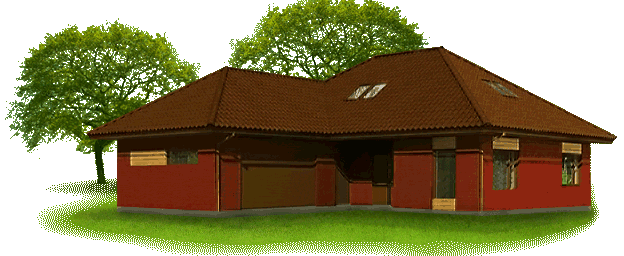|
Top projects
Eco 113m2
 "Eco-113" stands for the design of a single-storey house with a double-pitch roof, and rational approach. The design includes four ...
Read more >>
"Eco-113" stands for the design of a single-storey house with a double-pitch roof, and rational approach. The design includes four ...
Read more >>
Funk 130m2
 The two-storey house is designed in the best traditions of functional architectural design. The design includes a large drawing room ...
Read more >>
The two-storey house is designed in the best traditions of functional architectural design. The design includes a large drawing room ...
Read more >>
City 136m2
 The "CITY 136" design is suitable for small families: the house includes four bedrooms and an ensemble of arched windows. ...
Read more >>
The "CITY 136" design is suitable for small families: the house includes four bedrooms and an ensemble of arched windows. ...
Read more >>
Double 130m2
 The "DOUBLE 130" design of a house with two apartments is intended for two families. The apartment blocks are connected ...
Read more >>
The "DOUBLE 130" design of a house with two apartments is intended for two families. The apartment blocks are connected ...
Read more >>
|
Thermo-profiles
Light steel profiles or thermo-profiles serve as the base for the thermopanels. Thermo-profiles are made of high-strength structural steel with thickness from 0.8 to 2.00 mm. What are the reasons for the selection of steel? Actually, steel is characterised by a high ratio value of material strength to density. For instance, the same parameter for wood is half as much, and the same for reinforced concrete is 20 times less.
Thus, steel is a much better option in terms of load-bearing capacity. The anti-corrosion properties of thermo-profiles are ensured by a hot galvanization process that provides a coating that is from 18 to 40 micrometres thick. To drastically reduce thermal conductivity, through slots are cut out in staggered order in every thermo-profile in order to increase the path of thermal flow. This allows for the reduction of effective thermal conductivity of the steel by 80% to 90%.
The staggered holes, as seen in Figure 1, allow for the elimination of a phenomenon known as “cold joints”. The thermal conductivity of exterior walls with thermo-profiles is approximately equal to that of wood. Unlike wood, thermo-profiles are not subject to the impact of any destructive biological process. Thanks to the holes, profiles also have good vibration and acoustical properties.
The main features of the thermo-profiles are as follows:
- lightweight, however strong and stable;
- high thermal resistance;
- climatic stability;
- homogenous structure and precise sizes of qualitative material;
- environmentally safe; its use results in saving wood;
- easy-to-treat, easy-to-assemble and easy-to-mount.
|
|
News
Producting technology becomes more perfect
Piter Grupp Invest OOD first among frame house manufactorors, replaced used before 9 mm plasterboard with KNAUF BG new product ... Read more >>
Feedback
Ph.: (+359) 32 942 410
E-mail:
|
|
|
|







